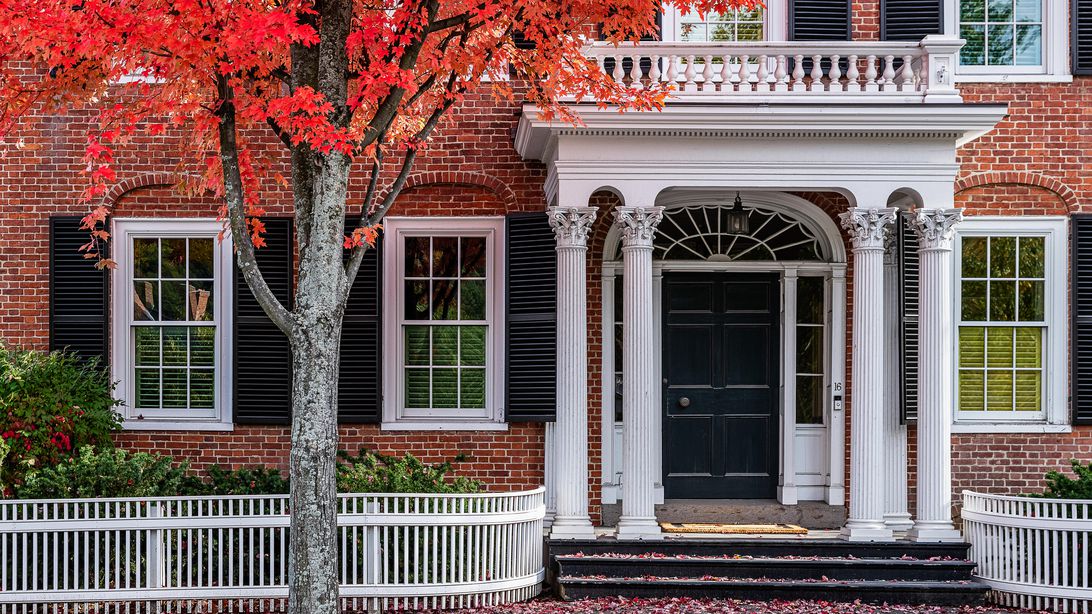A variety of major mortgage rates sunk lower today. While 15-year fixed mortgage rates grew, interest rates on 30-year fixed-rate mortgages dwindled. For variable rates, the 5/1 adjustable-rate mortgage decreased. Mortgage interest rates are never set in stone, but interest rates are historically low. Because of this, right now is a great time for prospective homebuyers to secure a fixed rate. Before you purchase a house, remember to think about your personal needs and financial situation, and shop around for different lenders to find the right one for you.
Find current mortgage rates for today
30-year fixed-rate mortgages
For a 30-year, fixed-rate mortgage, the average rate you’ll pay is 3.13%, which is a decline of 3 basis points compared to one week ago. (A basis point is equivalent to 0.01%.) Thirty-year fixed mortgages are the most common loan term. A 30-year fixed rate mortgage will usually have a lower monthly payment than a 15-year one — but often a higher interest rate. Although you’ll pay more interest over time — you’re paying off your loan over a longer timeframe — if you’re looking for a lower monthly payment, a 30-year fixed mortgage may be a good option.
15-year fixed-rate mortgages
The average rate for a 15-year, fixed mortgage is 2.43%, which is an increase of 1 basis point compared to a week ago. Compared to a 30-year fixed mortgage, a 15-year fixed mortgage with the same loan value and interest rate will have a bigger monthly payment. But a 15-year loan will usually be the better deal, as long as you’re able to afford the monthly payments. These include usually being able to get a lower interest rate, paying off your mortgage sooner, and paying less total interest in the long run.
5/1 adjustable-rate mortgages
A 5/1 ARM has an average rate of 3.14%, a downtick of 5 basis points from seven days ago. For the first five years, you’ll usually get a lower interest rate with a 5/1 ARM compared to a 30-year fixed mortgage. But you may end up paying more after that time, depending on the terms of your loan and how the rate adjusts with the market rate. If you plan to sell or refinance your house before the rate changes, an ARM could make sense for you. If not, shifts in the market may significantly increase your interest rate.
Mortgage rate trends
We use information collected by Bankrate, which is owned by the same parent company as CNET, to track rates changes over time. This table summarizes the average rates offered by lenders across the US:
Current average mortgage interest rates
| Loan type | Interest rate | A week ago | Change |
|---|---|---|---|
| 30-year fixed rate | 3.13% | 3.16% | -0.03 |
| 15-year fixed rate | 2.43% | 2.42% | +0.01 |
| 30-year jumbo mortgage rate | 3.33% | 3.20% | +0.13 |
| 30-year mortgage refinance rate | 3.21% | 3.22% | -0.01 |
Updated on June 24, 2021.
How to find the best mortgage rates
You can get a personalized mortgage rate by reaching out to your local mortgage broker or using an online calculator. Make sure to take into account your current financial situation and your goals when looking for a mortgage. Specific mortgage rates will vary based on factors including credit score, down payment, debt-to-income ratio and loan-to-value ratio. Generally, you want a good credit score, a larger down payment, a lower DTI and a lower LTV to get a lower interest rate. Beyond the mortgage rate, factors including closing costs, fees, discount points and taxes might also factor into the cost of your home. You should comparison shop with multiple lenders — for example, credit unions and online lenders in addition to local and national banks — in order to get a mortgage loan that’s the best fit for you.
What is a good loan term?
One important thing to keep in mind when choosing a mortgage is the loan term, or payment schedule. The mortgage terms most commonly offered are 15 years and 30 years, although you can also find 10-, 20- and 40-year mortgages. Another important distinction is between fixed-rate and adjustable-rate mortgages. For fixed-rate mortgages, interest rates are the same for the life of the loan. For adjustable-rate mortgages, interest rates are fixed for a certain number of years (usually five, seven or 10 years), then the rate changes annually based on the current interest rate in the market.
One thing to take into consideration when deciding between a fixed-rate and adjustable-rate mortgage is how long you plan on staying in your home. Fixed-rate mortgages might be a better fit for people who plan on staying in a home for a while. While adjustable-rate mortgages can sometimes offer lower interest rates upfront, fixed-rate mortgages are more stable in the long term. However you may get a better deal with an adjustable-rate mortgage if you’re only planning to keep your home for a couple years. The best loan term all depends on an individual’s situation and goals, so be sure to consider what’s important to you when choosing a mortgage.
Bring your home up to speed with the latest on automation, security, utilities, networking and more.




